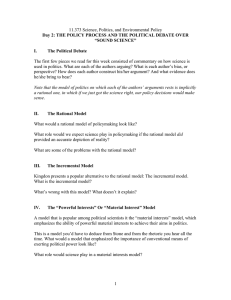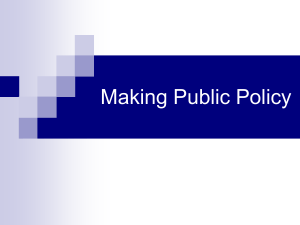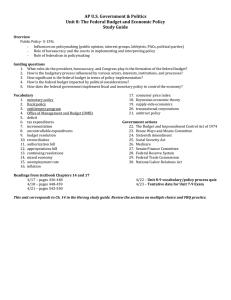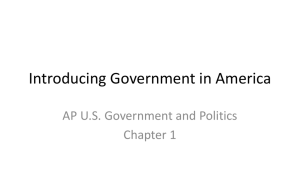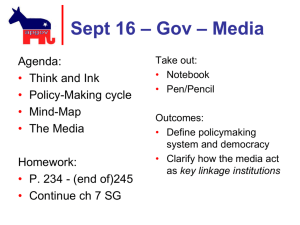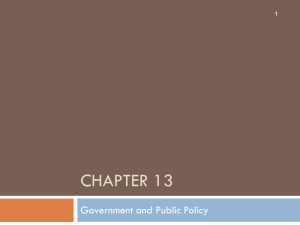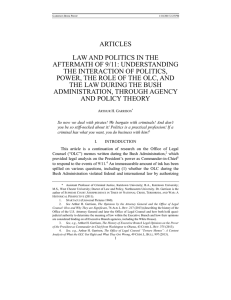The Politics of U.S Foreign Policy Rosati and Scott Chapter 1
advertisement
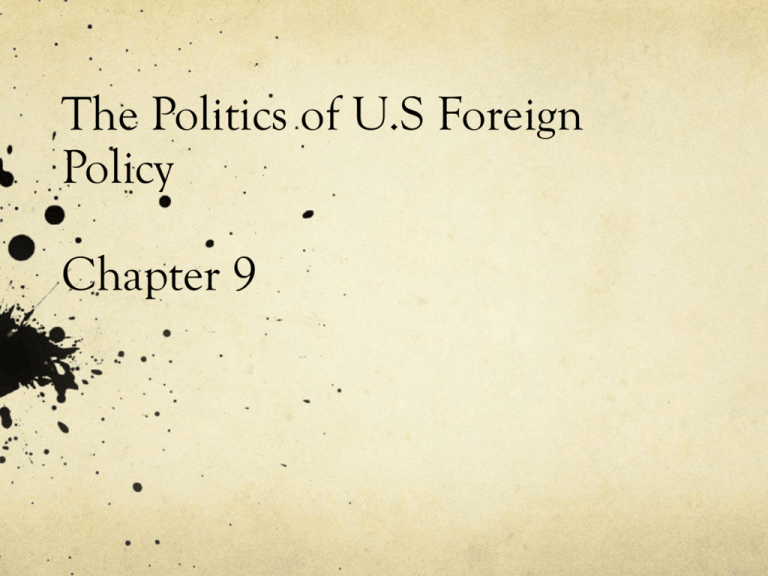
The Politics of U.S Foreign Policy Chapter 9 History: Patterns of Policymaking Globalization Preeminence Rise or Restriction of presidential power Rise of the NSC vis-à-vis State Expansion of the national security bureaucracy Ascent of non-security agencies Resulting complication Policymaking Stages Agenda setting Policy formulation Policy implementation Theory: Models of Decisionmaking Rational Actor Groupthink Governmental politics Organizational process Rational Actor Ideal type – decision and implementation Pyramid of authority President dominates hierarchy Information and advice flow directly to president Decisions based on advice and information EOP staff manages bureaucratic response Rational, centralized and responsive Groupthink Overestimate competency Stereotype out-groups Rationalize decisions Pressure to conform, self-censorship Illusion of consensus Examples: Johnson, Reagan, Bush Governmental Politics Model Pluralism Diffusion of power Competition Compromise Organizational Process Model Bureaucracy: information, alternatives and implementation The bureaucracy as an independent driving force Decentralized Feudal Contradictions and incoherence Incremental Policymaking Levels Presidential Bureaucratic Cognition and Perception Cognitive structures of belief Selective memory Selective attention and perception Causal inference Cognitive stability Dominant Theories Cognitive consistency theory: consistency seekers Schema theory: cognitive misers Common Patterns of Perception and Misperception Categorization and stereotyping Simplifying causal inference Historical analogies Personality and Decisionmaking Johnson Reagan Bush Obama Stress and Decisionmaking Low and moderate stress levels High stress levels Short term, long term Crisis and Stress Heighten salience of time Reduce size of policymaking group Reduce tolerance for ambiguity Increase cognitive rigidity Encourage selective search for information Produce concern for immediate future Minimize communication Increase ad hoc communication Limit alternatives Increase likelihood of polarized choice Disrupt complex learning
